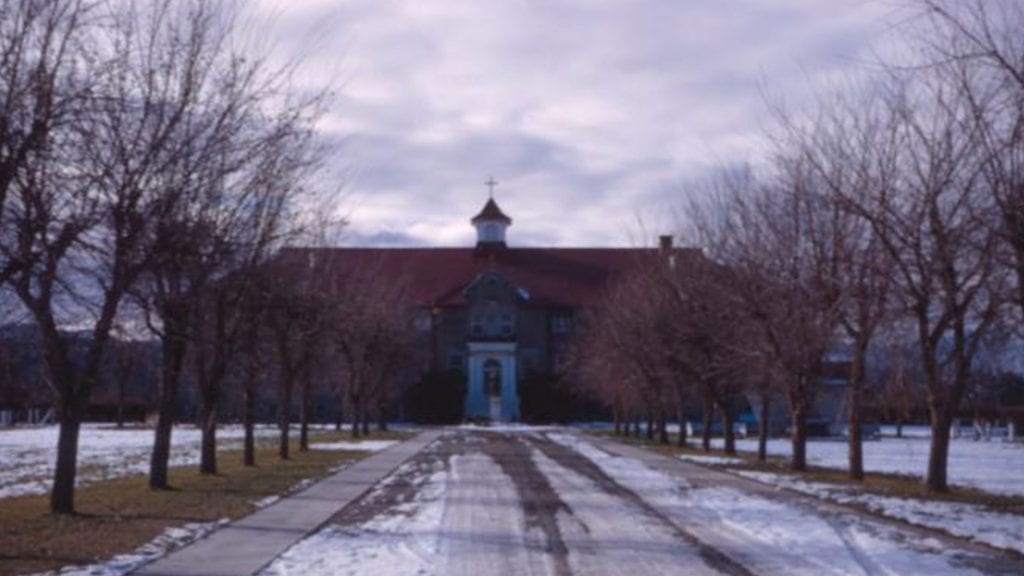
St. Eugene's Residential School is also known as the Kootenay or Little Red Brick School. Photo: Indian Residential School History & Dialogue Centre
The Indian Residential Schools Resolution Health Support Program has a hotline to help residential school survivors and their relatives suffering from trauma invoked by the recall of past abuse. The number is 1-866-925-4419.
Another First Nation is reporting the discovery of unmarked graves near the site of a former residential school.
The community of ʔaq’am, also known as St. Mary’s band and situated within the traditional territory of the Ktunaxa Nation near Cranbrook, B.C., located 182 unmarked graves in 2020 using ground penetrating radar.
But it only recently notified the nearby Lower Kootenay First Nation about the find.
“In the ground search conducted by the community of ʔaq’am, the findings revealed 182 human remains in unmarked graves,” said a news release from Lower Kootenay shared with APTN News Wednesday.
“It is believed that the remains of these 182 souls are from the member Bands of the Ktunaxa nation, neighbouring First Nations communities, & the community of aqam.”
Living survivors
Lower Kootenay said it still has living survivors of approximately 100 band members forced to attend St. Eugene’s Mission School as part of the federal government’s residential school system.
It said the institution was run by the Roman Catholic Church from 1912 until the early 1970s.
“The residential school system was mandated by the government of Canada,” Lower Kootenay added in the release.
“All Indigenous children ages 7 -15 were required by law to attend residential school where many Indigenous children received cruel & sometimes fatal treatment.”
More details about St. Eugene’s or Kootenay residential school are located on the website of the Indian Residential School History & Dialogue Centre. It said the building opened in 1890 just north of Cranbrook, before being replaced with an industrial school in 1912.
Influenza
It said there were recurring outbreaks of influenza, mumps, measles, chicken pox, and tuberculosis. In 1969, the federal government took over the operation of the residence and closed it the following year.
The building was converted into an upscale resort, along with a hotel and golf course, by the St. Mary’s band after a referendum was held in favour of restoration. There is also an RV park and interpretive centre that explains the sad history of the former school.
According to the National Centre for Truth and Reconciliation, an estimated 5,000 children passed through its hallways from the communities of St. Mary’s, Lower Kootenay, Tobacco Plains, Lower Similkameen, Similkameen, Okanagan, Inkamoop / Inkammoep / Inkameep, Termission, Creston, Vernon, Enderby, Comox, Little Shuswap, Upper Nicola, Spallumchene / Spallumcheon / Sallumchene, North Thompson, Lake Similk, Neskainlith, Tsartlip, Osoyoos, Penticton, Columbia Lake, Shuswap, Tsartlip, Westbank, Athelmer, Cranbrook, Kamloops, Cardston and Seabird Island.
This is the third First Nation – and the second in B.C. – to report a similar find using ground penetrating radar in the past month.
The first was May 27 by the Tk’emlúps te Secwépemc Nation, which announced 215 graves at the site of the Kamloops Indian Residential School. The second was Cowessess First Nation in Saskatchewan that said on June 23 it had located 751 unmarked graves.
Editor’s note: This story was updated at 1:06 p.m. CT on 30/06/21









